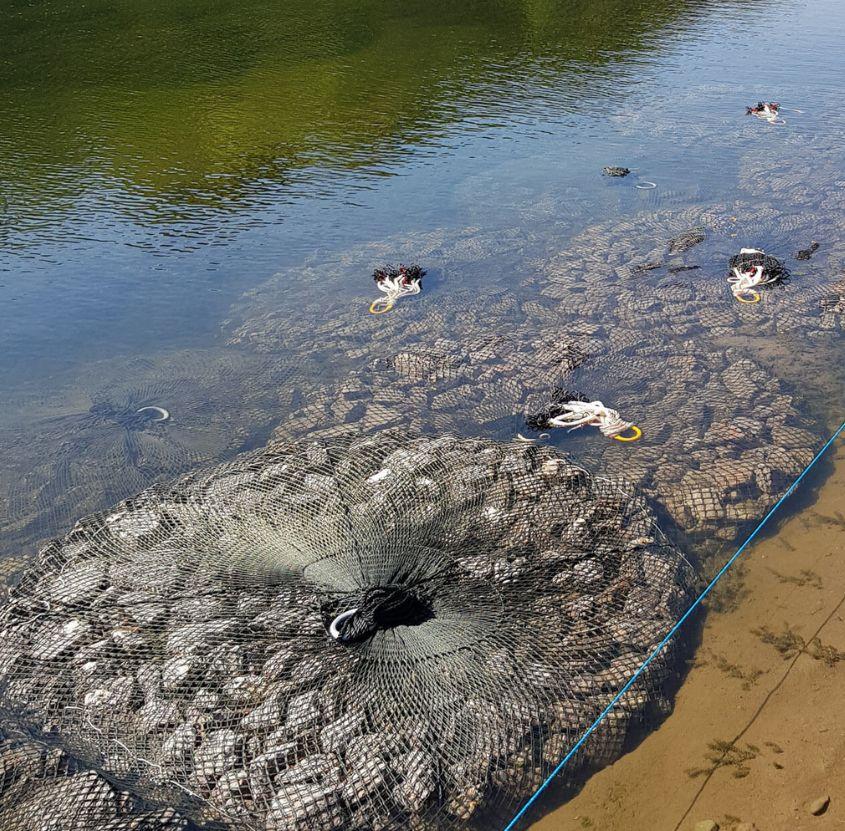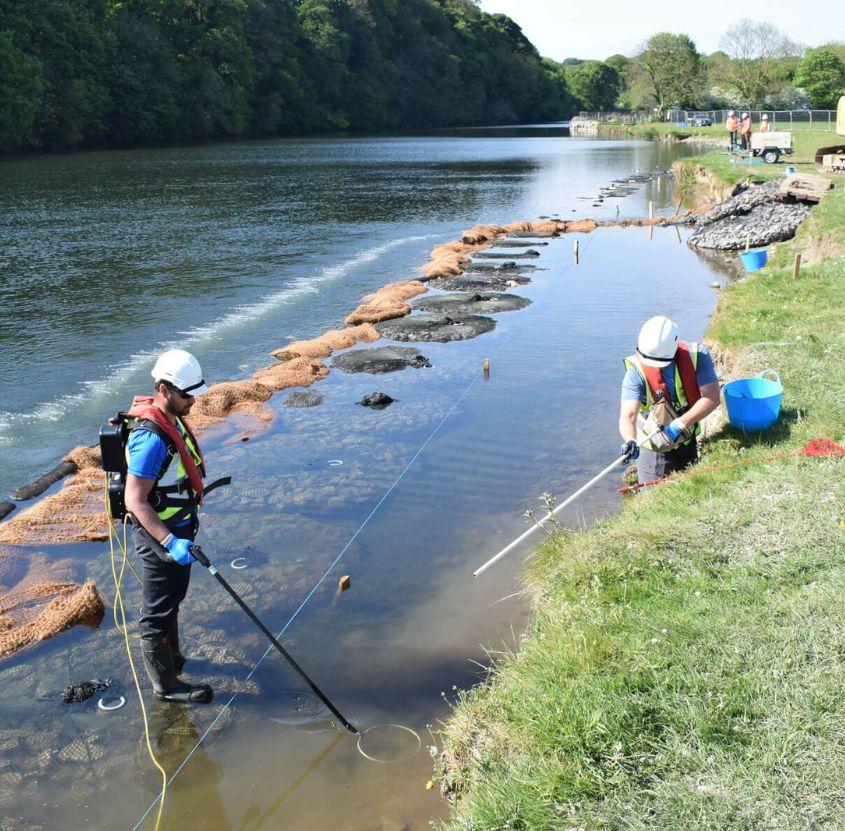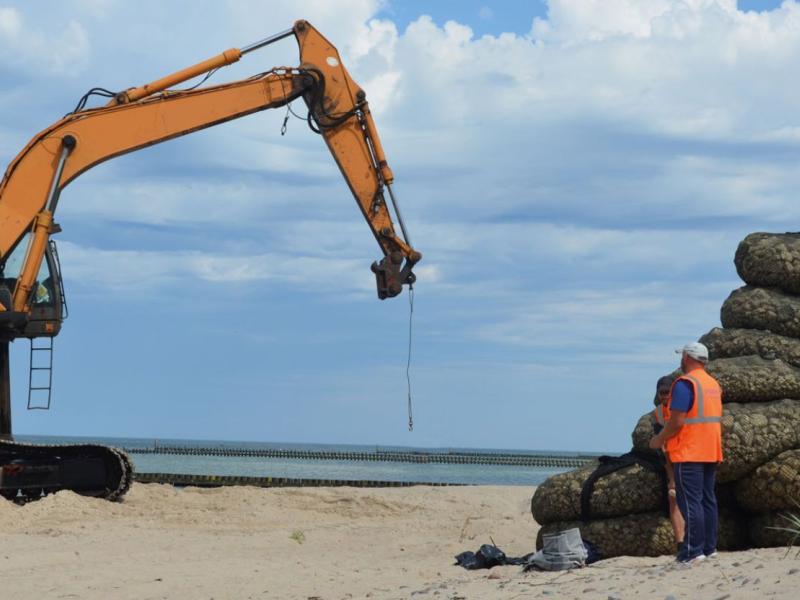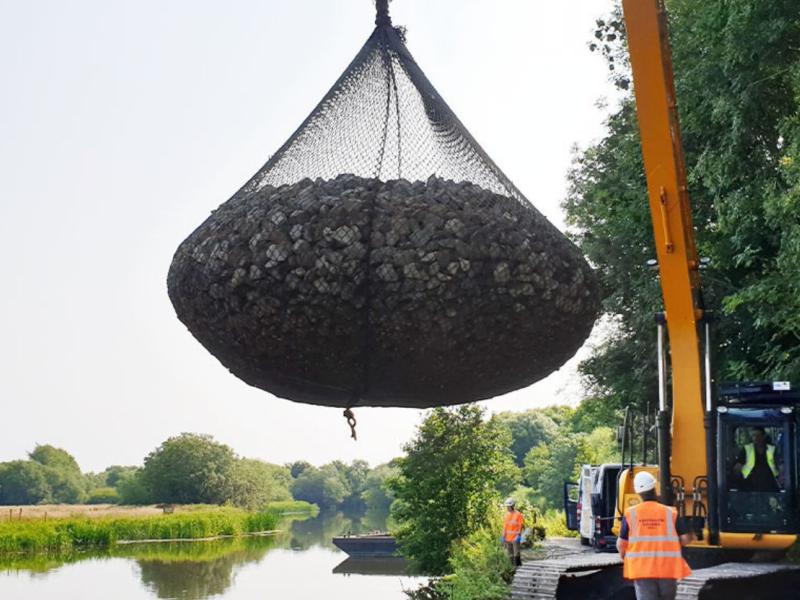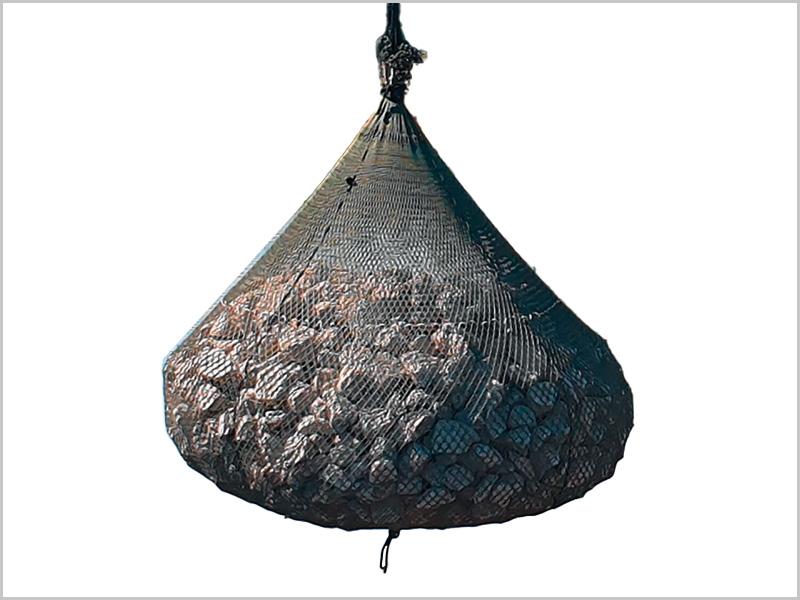
STABILISING RIVER BANKS FROM EROSION WITH AQUAROCKBAG
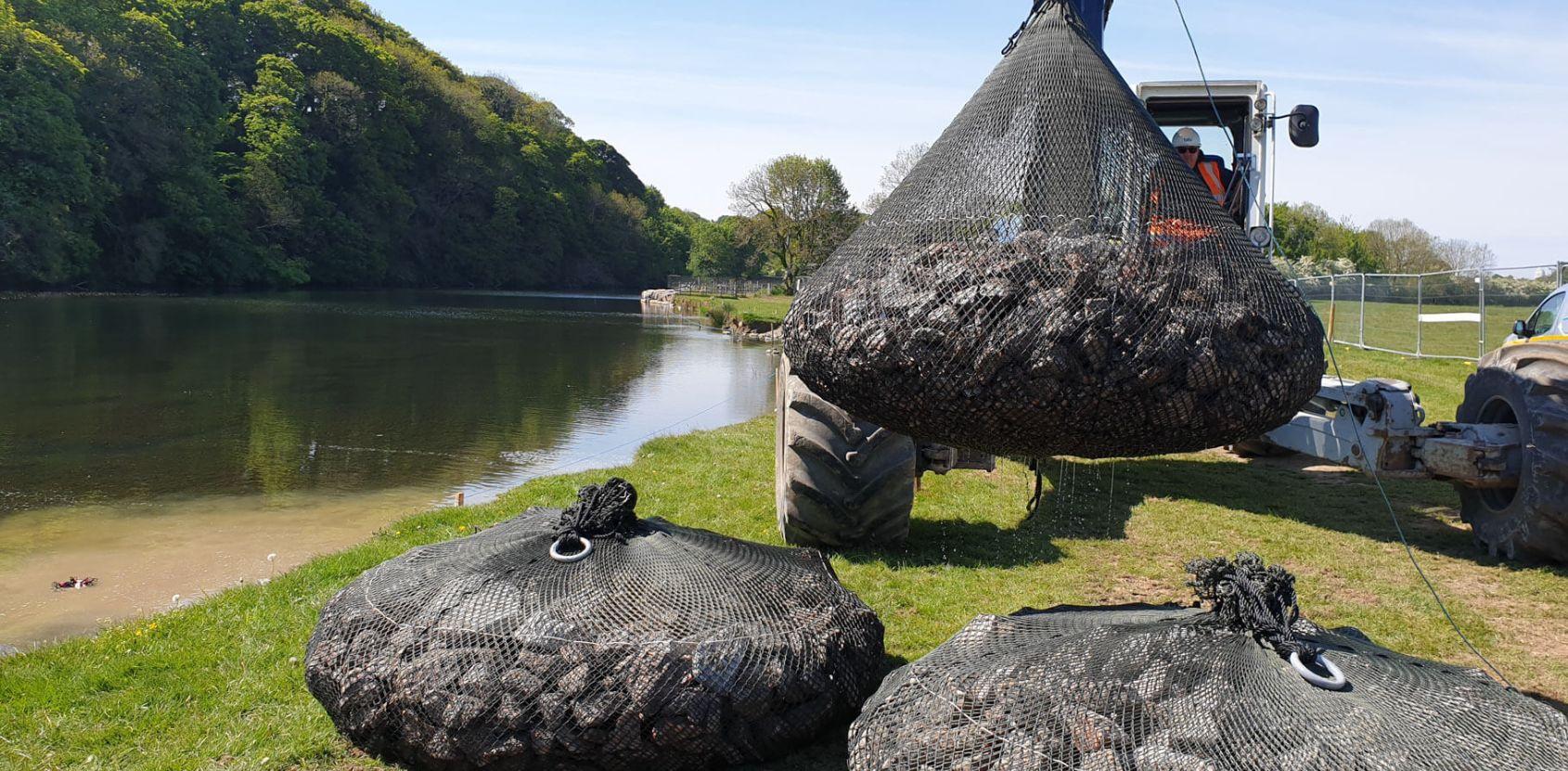
PROJECT DESCRIPTION
The River Derwent in Barepot is located about 0.75 km east of Workington, UK. In 2009 and 2015, two major floods occurred, causing increased erosion in the river, which impacted several key assets in the area around Yearl pumping station. These assets included the access track, the bank between Yearl weir and the pumping station, and the bank upstream of Yearl weir.
Records from the British Geological Survey indicated that the site was covered by alluvium and river terrace deposits over Carboniferous Pennine Middle Coal Measures. Further ground investigation and a geomorphological survey found highly erodible fine weak alluvial soils consisting of dark grey and brown fine to coarse sands. The area had heavily grazed agricultural vegetation, and the eroding banks were completely devoid of vegetation.
The British Geological Survey records showed that the site had alluvium and river terrace deposits over Carboniferous Pennine Middle Coal Measures. A subsequent ground investigation and geomorphological survey revealed erodible fine weak alluvial soils, including dark grey and brown fine to coarse sands. The area had heavily grazed agricultural vegetation, and the eroding banks lacked any vegetation.
OUR SOLUTION
A bathymetric survey was conducted, followed by hydraulic modelling of the existing channel and floodplain to create maps of bed, bank, and floodplain flow velocities and shear stress for 1:200-year flood events. The design process was guided based on this data, and an additional model was developed to inform the client and the statutory permit agency about potential future changes to the channel resulting from bank reinstatement works.
Due to the site’s ecological sensitivity, bioengineered designs were preferred over traditional hard-engineered bank protection. Challenges arose with the scour pools, where bioengineering techniques alone were insufficient to control erosion in water 2-3 metres deep. To address this, AquaRockBag was installed alongside these techniques.
Additional measures were taken along the river banks and adjacent floodplain to prevent erosion and reduce flood impacts. This included tree planting on reshaped river banks and the use of a high-performance turf reinforcement system consisting of woven HP-TRM and ground anchors. The matting was extended to cover the area where a new river channel had formed due to an avulsion process, ensuring that major floods wouldn’t reshape this channel in the future.
PRODUCT USED
AquaRockBag®
- A durable mesh net made from premium virgin HDPE or polyester materials
- Design of the bag facilitates the establishment of plant life on and around the bags, creating a natural habitat for aquatic ecosystems over a short period of time
- Offers minimal environmental impact during installation to preserve the natural habitat and reduces the risk of secondary environmental damage
- Lower projects costs with a flexible net structure that adapts well to uneven surfaces, eliminating the need for ground preparation works
- Adaptable to various site conditions and can be reused in different projects, allowing for easy reconfiguration and relocation
- Net offers excellent anti-abrasion properties and high UV resistance
- The net can be filled on-site using a portable filling frame and machinery, which makes installation quick and easy
